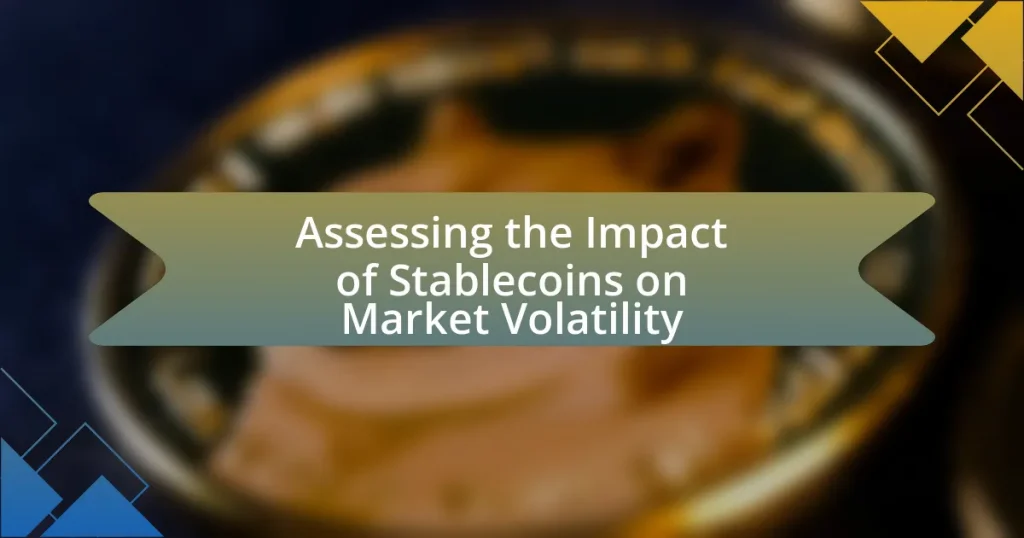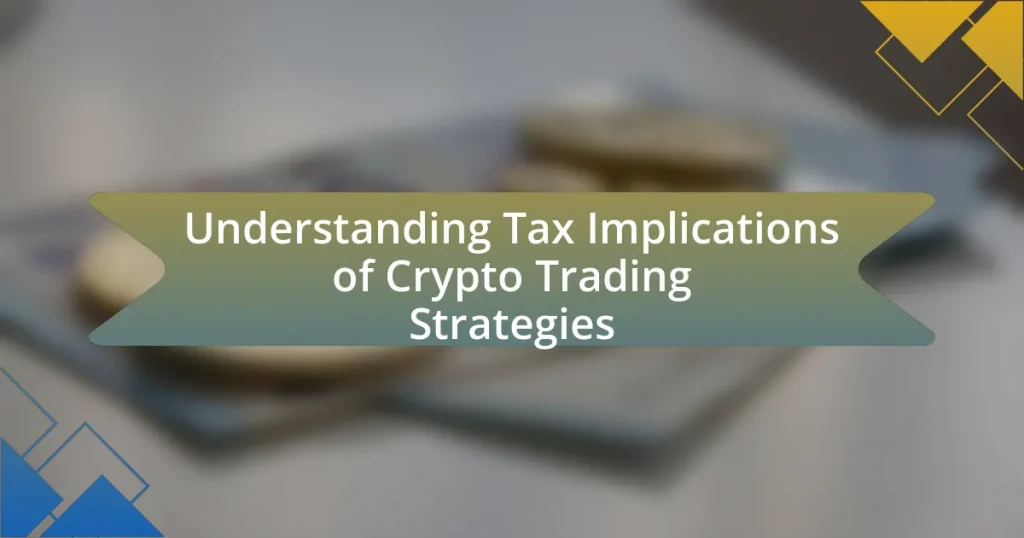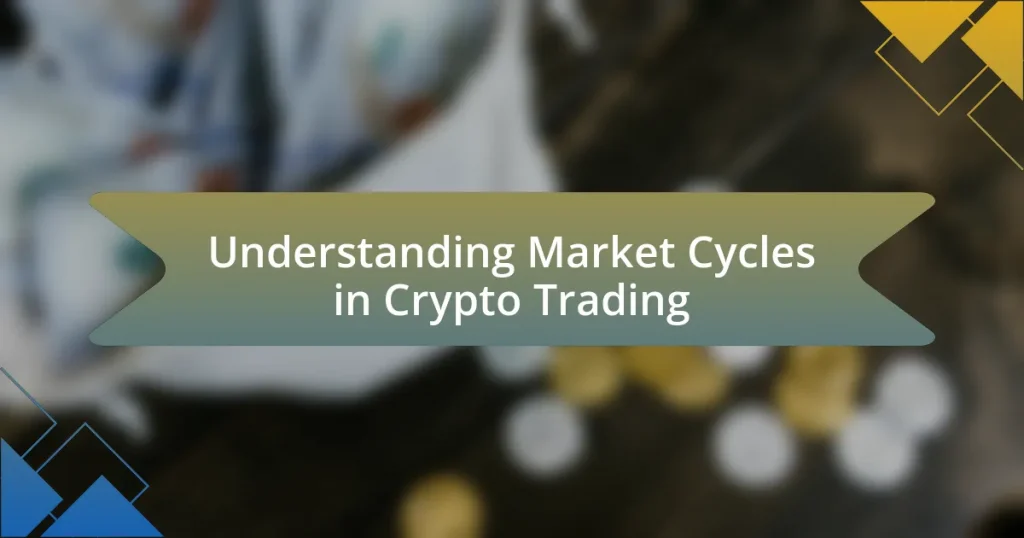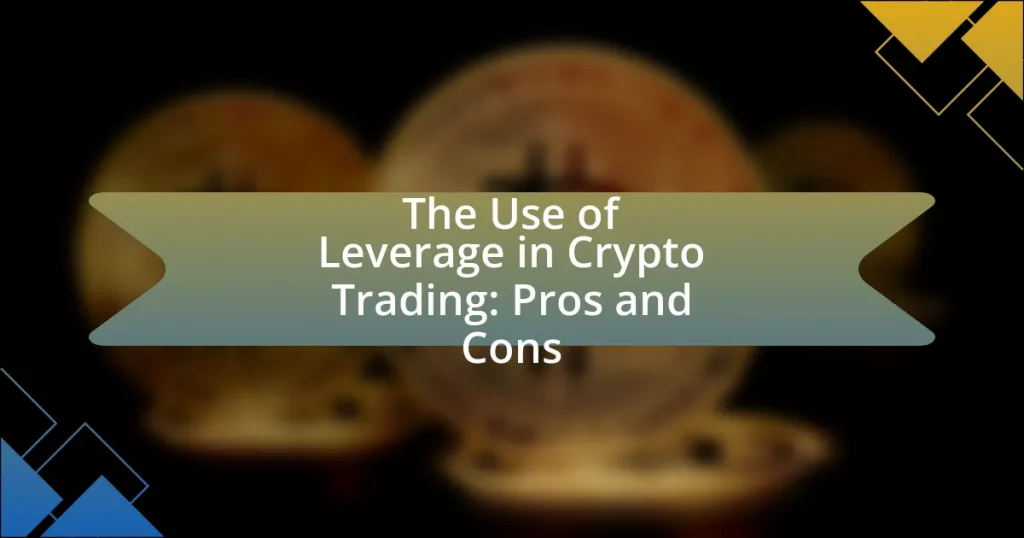Stablecoins are a type of cryptocurrency designed to maintain a stable value by pegging their worth to reserve assets, typically fiat currencies. This article examines the various types of stablecoins, including fiat-collateralized, crypto-collateralized, and algorithmic stablecoins, and their mechanisms for maintaining value. It also explores the importance of stablecoins in the cryptocurrency ecosystem, their role in facilitating trading and liquidity, and their influence on market volatility. Additionally, the article addresses the risks and challenges associated with stablecoins, including regulatory scrutiny and potential loss of peg, while highlighting best practices for investors.

What are Stablecoins and How Do They Function?
Stablecoins are a type of cryptocurrency designed to maintain a stable value by pegging their worth to a reserve of assets, typically fiat currencies like the US dollar. They function through mechanisms such as collateralization, where each stablecoin is backed by a corresponding amount of a fiat currency or other assets held in reserve, or algorithmic adjustments that control supply based on demand to stabilize the price. For example, Tether (USDT) is pegged to the US dollar, with each token backed by dollar reserves, ensuring that its value remains close to one dollar. This stability allows stablecoins to facilitate transactions and serve as a reliable store of value in the volatile cryptocurrency market.
What are the different types of stablecoins?
The different types of stablecoins include fiat-collateralized stablecoins, crypto-collateralized stablecoins, and algorithmic stablecoins. Fiat-collateralized stablecoins, such as Tether (USDT) and USD Coin (USDC), are backed by reserves of fiat currency, typically the US dollar, ensuring a 1:1 peg. Crypto-collateralized stablecoins, like DAI, are backed by other cryptocurrencies and utilize smart contracts to maintain their value. Algorithmic stablecoins, such as Ampleforth, use algorithms to control supply and demand, adjusting the token supply to stabilize the price without collateral. These classifications are essential for understanding how stablecoins function and their potential impact on market volatility.
How do fiat-collateralized stablecoins maintain their value?
Fiat-collateralized stablecoins maintain their value by being backed 1:1 by a reserve of fiat currency, typically held in a bank account. This backing ensures that for every stablecoin issued, an equivalent amount of fiat currency is stored, providing a stable value that is directly tied to the fiat currency. For example, if a stablecoin is pegged to the US dollar, the issuer must hold one dollar in reserve for each stablecoin in circulation, which helps to stabilize its price against fluctuations in the cryptocurrency market. This mechanism is supported by regular audits and transparency measures that verify the existence of the reserves, thereby reinforcing trust and confidence among users.
What mechanisms do crypto-collateralized stablecoins use for stability?
Crypto-collateralized stablecoins use mechanisms such as over-collateralization, liquidation protocols, and smart contracts to maintain stability. Over-collateralization involves backing the stablecoin with a greater value of cryptocurrency than the stablecoin issued, ensuring that even with price fluctuations, the collateral can cover the stablecoin’s value. Liquidation protocols automatically sell off collateral when its value falls below a certain threshold, preventing the stablecoin from becoming under-collateralized. Smart contracts facilitate these processes by executing transactions and enforcing rules without the need for intermediaries, thereby enhancing trust and efficiency. These mechanisms collectively help maintain the peg of the stablecoin to a target value, typically a fiat currency, thereby reducing market volatility.
How do algorithmic stablecoins operate to control supply?
Algorithmic stablecoins control supply through automated mechanisms that adjust the coin’s supply based on market demand. These stablecoins utilize algorithms to increase or decrease the circulating supply in response to price fluctuations, maintaining a target value, typically pegged to a fiat currency. For instance, when the price of the stablecoin rises above its peg, the algorithm may issue new coins to increase supply and lower the price. Conversely, if the price falls below the peg, the algorithm can reduce supply by buying back coins or incentivizing holders to lock them up, thereby stabilizing the price. This dynamic adjustment process is designed to minimize volatility and maintain the stablecoin’s value, as evidenced by projects like Ampleforth and Terra, which have implemented such mechanisms to varying degrees of success.
Why are stablecoins important in the cryptocurrency ecosystem?
Stablecoins are important in the cryptocurrency ecosystem because they provide price stability, which facilitates transactions and reduces volatility. Unlike traditional cryptocurrencies, stablecoins are pegged to stable assets like fiat currencies or commodities, allowing users to avoid the significant price fluctuations often seen in the crypto market. For instance, Tether (USDT) and USD Coin (USDC) maintain a 1:1 value with the US dollar, making them reliable for trading and as a medium of exchange. This stability encourages broader adoption of cryptocurrencies for everyday transactions and enhances liquidity in the market, as traders can easily move in and out of volatile assets without losing value.
How do stablecoins facilitate trading and liquidity?
Stablecoins facilitate trading and liquidity by providing a stable value that reduces volatility in cryptocurrency markets. Their pegged value, often to fiat currencies like the US dollar, allows traders to enter and exit positions without the risk of significant price fluctuations that are common with other cryptocurrencies. For instance, during periods of market instability, traders can convert their volatile assets into stablecoins to preserve value, thus maintaining liquidity. According to a report by the Bank for International Settlements, stablecoins can enhance market efficiency by enabling faster transactions and lower fees compared to traditional banking systems, further supporting trading activities.
What role do stablecoins play in decentralized finance (DeFi)?
Stablecoins serve as a crucial component in decentralized finance (DeFi) by providing price stability and facilitating transactions. Their pegged value to fiat currencies or other assets allows users to engage in lending, borrowing, and trading without the volatility typically associated with cryptocurrencies. For instance, according to a report by the Bank for International Settlements, stablecoins accounted for over 50% of the total trading volume in DeFi platforms in 2021, highlighting their significance in maintaining liquidity and enabling efficient market operations.

How Do Stablecoins Influence Market Volatility?
Stablecoins influence market volatility by providing a stable medium of exchange that can reduce price fluctuations in the cryptocurrency market. Their pegged value to fiat currencies or other assets allows traders to quickly convert volatile cryptocurrencies into stablecoins, thereby mitigating risk during market downturns. For instance, during periods of high volatility, such as the market crash in March 2020, the use of stablecoins surged, with Tether’s market capitalization increasing significantly, indicating their role as a safe haven. This behavior demonstrates that stablecoins can act as a buffer against extreme price swings, ultimately contributing to a more stable trading environment.
What is the relationship between stablecoins and market stability?
Stablecoins contribute to market stability by providing a reliable medium of exchange that mitigates volatility in cryptocurrency markets. Their pegged value to stable assets, such as fiat currencies, allows users to avoid the price fluctuations commonly associated with cryptocurrencies. For instance, during periods of high market volatility, stablecoins like Tether and USD Coin have been used as safe havens, enabling traders to preserve value and facilitate transactions without the risk of significant losses. Research indicates that the increased adoption of stablecoins correlates with reduced price swings in the broader cryptocurrency market, demonstrating their role in enhancing overall market stability.
How do stablecoins mitigate price fluctuations in volatile markets?
Stablecoins mitigate price fluctuations in volatile markets by maintaining a stable value pegged to a reserve asset, such as fiat currency or commodities. This pegging mechanism allows stablecoins to provide a reliable medium of exchange and store of value, reducing the impact of market volatility typically seen in cryptocurrencies. For instance, Tether (USDT) is pegged to the US dollar, ensuring that its value remains close to one dollar, which helps users avoid the drastic price swings associated with other cryptocurrencies like Bitcoin or Ethereum. By offering stability, stablecoins facilitate smoother transactions and encourage broader adoption in trading and commerce, thereby contributing to overall market stability.
What evidence exists to support the impact of stablecoins on market volatility?
Evidence supporting the impact of stablecoins on market volatility includes studies showing that stablecoins can reduce price fluctuations in cryptocurrency markets. For instance, research by Auer and Claessens (2021) published by the Bank for International Settlements indicates that stablecoins provide liquidity and can act as a buffer during market downturns, thereby stabilizing prices. Additionally, a report from the Cambridge Centre for Alternative Finance highlights that the increased use of stablecoins correlates with lower volatility in trading pairs involving cryptocurrencies. These findings suggest that stablecoins play a significant role in mitigating market volatility.
How do stablecoins affect investor behavior?
Stablecoins influence investor behavior by providing a stable store of value, which encourages risk-averse investors to engage in cryptocurrency markets. This stability reduces the volatility typically associated with cryptocurrencies, making them more appealing for transactions and hedging against market fluctuations. Research indicates that during periods of high market volatility, the use of stablecoins increases, as investors seek to minimize losses and maintain liquidity. For instance, a study by the Bank for International Settlements found that stablecoins can enhance market efficiency by facilitating quicker transactions and reducing the need for traditional banking intermediaries, thereby attracting more participants to the market.
What psychological factors influence investor confidence in stablecoins?
Investor confidence in stablecoins is influenced by psychological factors such as perceived stability, trust in underlying assets, and social proof. Perceived stability arises from the design of stablecoins, which are often pegged to fiat currencies, leading investors to feel secure about their value. Trust in the underlying assets, such as reserves or collateral backing the stablecoin, enhances confidence; for instance, stablecoins like Tether and USDC provide transparency regarding their reserves, which can alleviate fears of devaluation. Social proof, where investors observe others investing in stablecoins, can also boost confidence, as seen in the growing adoption of stablecoins in decentralized finance (DeFi) platforms, indicating a collective belief in their reliability.
How do stablecoins impact trading strategies during market downturns?
Stablecoins provide traders with a means to maintain liquidity and reduce exposure to volatility during market downturns. By allowing traders to convert their assets into a stable currency, stablecoins help preserve capital and facilitate quick re-entry into the market when conditions improve. For instance, during the 2022 cryptocurrency market crash, many traders utilized stablecoins like USDT and USDC to avoid losses, as these coins maintained their value relative to the US dollar, enabling them to strategically reposition their investments without incurring significant losses. This behavior illustrates how stablecoins serve as a risk management tool, allowing traders to navigate downturns more effectively.

What Are the Risks and Challenges Associated with Stablecoins?
Stablecoins face several risks and challenges, including regulatory scrutiny, market volatility, and liquidity issues. Regulatory scrutiny arises as governments and financial authorities seek to establish frameworks for stablecoin operations, which can lead to compliance costs and operational adjustments. Market volatility can occur if the underlying assets backing the stablecoins experience significant price fluctuations, potentially undermining the stability that these coins aim to provide. Additionally, liquidity issues may arise during periods of high demand or market stress, making it difficult for users to convert stablecoins back into fiat currency or other assets. These challenges highlight the complexities involved in maintaining the intended stability of stablecoins in a dynamic financial environment.
What regulatory challenges do stablecoins face?
Stablecoins face significant regulatory challenges primarily related to compliance with existing financial regulations and the need for clear legal frameworks. Regulatory bodies, such as the Financial Stability Oversight Council in the United States, express concerns about consumer protection, anti-money laundering (AML) measures, and the potential for systemic risk in the financial system. For instance, the lack of transparency in how stablecoins are backed can lead to questions about their stability and reliability, prompting regulators to seek more stringent disclosure requirements. Additionally, the classification of stablecoins as securities or commodities can affect their regulatory treatment, complicating their integration into the existing financial ecosystem.
How do regulations vary across different jurisdictions for stablecoins?
Regulations for stablecoins vary significantly across different jurisdictions, reflecting diverse approaches to financial oversight. For instance, the United States has a fragmented regulatory landscape where stablecoins may be subject to state-level money transmitter laws and federal regulations, such as those from the Securities and Exchange Commission (SEC) and the Commodity Futures Trading Commission (CFTC). In contrast, the European Union is moving towards a more unified regulatory framework through the Markets in Crypto-Assets (MiCA) regulation, which aims to provide comprehensive rules for stablecoins and other crypto-assets. Additionally, countries like China have implemented strict bans on cryptocurrency transactions, including stablecoins, while jurisdictions such as Singapore have adopted a more permissive stance, encouraging innovation while ensuring consumer protection through the Payment Services Act. These varying regulations impact how stablecoins are issued, traded, and utilized, influencing their role in market volatility.
What potential risks do regulatory changes pose to stablecoin stability?
Regulatory changes pose significant risks to stablecoin stability by potentially altering the operational framework and compliance requirements for issuers. For instance, stricter regulations could lead to increased operational costs, forcing some stablecoin providers to exit the market, which may reduce liquidity and increase volatility. Additionally, changes in regulatory clarity can create uncertainty among investors, leading to rapid sell-offs or shifts in demand, as seen in the aftermath of regulatory announcements in various jurisdictions. Historical examples, such as the impact of the SEC’s scrutiny on certain cryptocurrencies, illustrate how regulatory actions can lead to market fluctuations and affect the perceived reliability of stablecoins.
What are the risks of relying on stablecoins for market stability?
Relying on stablecoins for market stability poses several risks, including regulatory uncertainty, liquidity issues, and potential loss of peg. Regulatory uncertainty arises as governments and financial authorities may impose restrictions or regulations that could affect the operation and acceptance of stablecoins, leading to market disruptions. Liquidity issues can occur if a stablecoin lacks sufficient backing or if there is a sudden demand for redemption, causing price fluctuations. Additionally, the potential loss of peg, where a stablecoin fails to maintain its value relative to its underlying asset, can lead to significant market volatility, as evidenced by instances where stablecoins like TerraUSD experienced dramatic devaluation in 2022. These factors collectively highlight the inherent risks associated with relying on stablecoins for maintaining market stability.
How can the collapse of a stablecoin affect the broader market?
The collapse of a stablecoin can lead to significant market instability by eroding investor confidence and triggering a sell-off in cryptocurrencies. When a stablecoin, designed to maintain a fixed value, fails, it can cause panic among investors, leading to a rapid decline in the value of other cryptocurrencies as they are often perceived as correlated assets. For instance, the collapse of TerraUSD in May 2022 resulted in a loss of approximately $40 billion in market capitalization across the cryptocurrency market, demonstrating how interconnected these assets are. Additionally, the failure of a stablecoin can disrupt liquidity in trading platforms, further exacerbating price volatility and potentially leading to a broader financial contagion within the crypto ecosystem.
What are the implications of a lack of transparency in stablecoin reserves?
A lack of transparency in stablecoin reserves can lead to significant market instability and loss of trust among investors. When stablecoins do not disclose their reserve assets or the mechanisms used to maintain their peg to fiat currencies, it raises concerns about their actual backing and solvency. For instance, the collapse of TerraUSD in May 2022 highlighted how insufficient transparency can result in panic selling and a rapid loss of value, causing broader market repercussions. Furthermore, regulatory scrutiny increases as authorities demand clearer disclosures to protect consumers, which can lead to operational challenges for stablecoin issuers. Overall, the implications include heightened market volatility, diminished investor confidence, and potential regulatory backlash.
What best practices should investors consider when using stablecoins?
Investors should prioritize due diligence when using stablecoins by thoroughly researching the underlying assets and mechanisms that back the stablecoin. This includes understanding whether the stablecoin is fiat-collateralized, crypto-collateralized, or algorithmically stabilized, as each type carries different risks. For instance, fiat-collateralized stablecoins like USDC are backed by reserves held in traditional banks, providing a level of security, while algorithmic stablecoins can be more volatile due to their reliance on market mechanisms.
Additionally, investors should assess the regulatory environment surrounding stablecoins, as changes in regulations can impact their value and usability. For example, the U.S. Treasury has indicated that stablecoins may be subject to stricter oversight, which could affect their adoption and stability.
Finally, diversifying investments across multiple stablecoins can mitigate risks associated with any single asset, as different stablecoins may respond differently to market conditions. This strategy is supported by the fact that the stablecoin market has seen fluctuations in demand and regulatory scrutiny, which can affect individual stablecoins’ performance.















